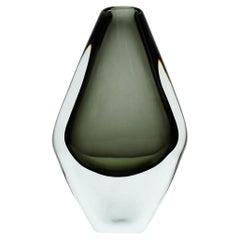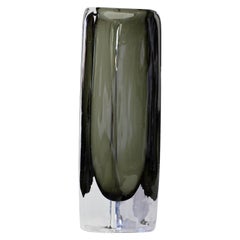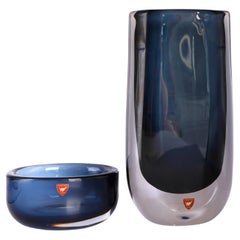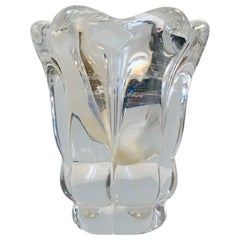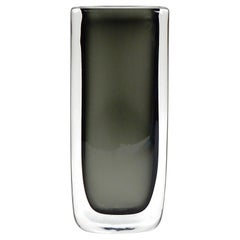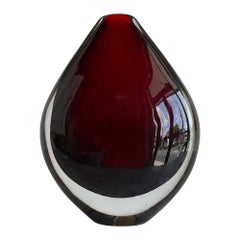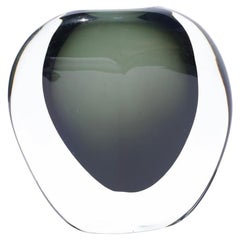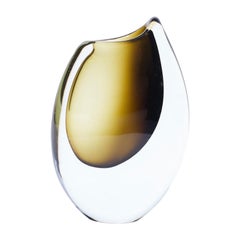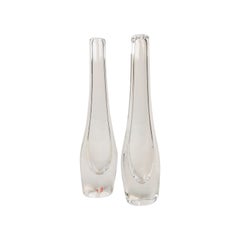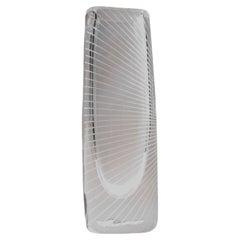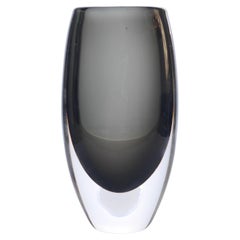Orrefors Midcentury Crystal Vase By Nils Landberg
Vintage 1960s Swedish Mid-Century Modern Vases
Glass
Mid-20th Century Swedish Mid-Century Modern Urns
Crystal
Mid-20th Century Swedish Mid-Century Modern Vases
Blown Glass, Sommerso
Vintage 1960s Swedish Mid-Century Modern Vases
Glass, Sommerso
Vintage 1950s Swedish Mid-Century Modern Vases
Crystal
Mid-20th Century Swedish Mid-Century Modern Vases
Art Glass
Mid-20th Century Swedish Mid-Century Modern Vases
Glass
Mid-20th Century Swedish Mid-Century Modern Urns
Crystal
Mid-20th Century Swedish Mid-Century Modern Urns
Crystal
Vintage 1950s Swedish Mid-Century Modern Glass
Art Glass
Early 20th Century Swedish Vases
Blown Glass
Vintage 1950s Swedish Mid-Century Modern Vases
Glass, Sommerso
Mid-20th Century Swedish Mid-Century Modern Bottles
Crystal
Recent Sales
Vintage 1960s Swedish Mid-Century Modern Vases
Glass
Vintage 1960s Swedish Mid-Century Modern Vases
Glass
Vintage 1960s Swedish Mid-Century Modern Vases
Glass
Vintage 1960s Swedish Mid-Century Modern Vases
Glass
Vintage 1960s Swedish Mid-Century Modern Vases
Glass
Vintage 1940s Swedish Mid-Century Modern Vases
Crystal
Mid-20th Century Swedish Mid-Century Modern Urns
Crystal
Mid-20th Century Swedish Mid-Century Modern Vases
Blown Glass, Sommerso
Mid-20th Century Swedish Scandinavian Modern Vases
Art Glass
Vintage 1950s Swedish Mid-Century Modern Vases
Art Glass, Blown Glass
Vintage 1970s Swedish Mid-Century Modern Vases
Glass
Vintage 1960s Swedish Mid-Century Modern Vases
Glass
Vintage 1960s Swedish Mid-Century Modern Vases
Glass
People Also Browsed
2010s European Vases
Marble
Vintage 1960s Swedish Mid-Century Modern Vases
Glass
Orrefors Midcentury Crystal Vase By Nils Landberg For Sale on 1stDibs
How Much is a Orrefors Midcentury Crystal Vase By Nils Landberg?
Orrefors for sale on 1stDibs
The Swedish design philosophy of “beautiful things for everyday life” is actualized in the vintage glassware of Orrefors. Founded in 1898, this glass manufacturer was one of the leading companies in the Scandinavian modernism movement and is revered by collectors for the fine craftsmanship and innovation of its superlative art glass.
Orrefors began making art glass — works that, distinct from mass-production pieces, are made in small numbers to showcase the skills and talents of artists and artisans — in 1913. Two of the first artists hired by the firm were Simon Gate and Edward Hald, who worked initially in the organic Art Nouveau style, and later proved adept with the geometric imagery of the Art Deco period.
Hald and Gate worked closely with glassblowers to refine traditional glassmaking methods, creating new materials such as "graal" glass. In the graal technique a design made with colored glass is encased in layers of transparent glass, preserving the image while the overall glass form is worked and shaped. Orrefors won an international following when it presented such pieces in Paris in 1925 at the Exposition Internationale des Arts Décoratifs et Industriels Modernes — the design fair whose name gave rise to the term Art Deco.
In the years following that success, Orrefors attracted more dynamic and experimental artists such as Vicke Lindstrand and Edvin Ohrström, who joined the company in the 1930s. Lindstrand and Ohstrom worked with glassblowers to create the "ariel" glass technique, an innovation that produces deeper, richer imagery that seems to morph and flow as light is refracted by the glass.
As you will see from the items offered on 1stDibs, there is a special aesthetic quality to vintage Orrefors glass. Whether a vase or a set of wine goblets, the work of this premier Swedish company represents the apex of functional artistry.
A Close Look at Mid-century Modern Furniture
Organically shaped, clean-lined and elegantly simple are three terms that well describe vintage mid-century modern furniture. The style, which emerged primarily in the years following World War II, is characterized by pieces that were conceived and made in an energetic, optimistic spirit by creators who believed that good design was an essential part of good living.
ORIGINS OF MID-CENTURY MODERN FURNITURE DESIGN
- Emerged during the mid-20th century
- Informed by European modernism, Bauhaus, International style, Scandinavian modernism and Frank Lloyd Wright’s architecture
- A heyday of innovation in postwar America
- Experimentation with new ideas, new materials and new forms flourished in Scandinavia, Italy, the former Czechoslovakia and elsewhere in Europe
CHARACTERISTICS OF MID-CENTURY MODERN FURNITURE DESIGN
- Simplicity, organic forms, clean lines
- A blend of neutral and bold Pop art colors
- Use of natural and man-made materials — alluring woods such as teak, rosewood and oak; steel, fiberglass and molded plywood
- Light-filled spaces with colorful upholstery
- Glass walls and an emphasis on the outdoors
- Promotion of functionality
MID-CENTURY MODERN FURNITURE DESIGNERS TO KNOW
- Charles and Ray Eames
- Eero Saarinen
- Milo Baughman
- Florence Knoll
- Harry Bertoia
- Isamu Noguchi
- George Nelson
- Danish modernists Hans Wegner and Arne Jacobsen, whose emphasis on natural materials and craftsmanship influenced American designers and vice versa
ICONIC MID-CENTURY MODERN FURNITURE DESIGNS
- Eames lounge chair
- Nelson daybed
- Florence Knoll sofa
- Egg chair
- Womb chair
- Noguchi coffee table
- Barcelona chair
VINTAGE MID-CENTURY MODERN FURNITURE ON 1STDIBS
The mid-century modern era saw leagues of postwar American architects and designers animated by new ideas and new technology. The lean, functionalist International-style architecture of Le Corbusier and Bauhaus eminences Ludwig Mies van der Rohe and Walter Gropius had been promoted in the United States during the 1930s by Philip Johnson and others. New building techniques, such as “post-and-beam” construction, allowed the International-style schemes to be realized on a small scale in open-plan houses with long walls of glass.
Materials developed for wartime use became available for domestic goods and were incorporated into mid-century modern furniture designs. Charles and Ray Eames and Eero Saarinen, who had experimented extensively with molded plywood, eagerly embraced fiberglass for pieces such as the La Chaise and the Womb chair, respectively.
Architect, writer and designer George Nelson created with his team shades for the Bubble lamp using a new translucent polymer skin and, as design director at Herman Miller, recruited the Eameses, Alexander Girard and others for projects at the legendary Michigan furniture manufacturer.
Harry Bertoia and Isamu Noguchi devised chairs and tables built of wire mesh and wire struts. Materials were repurposed too: The Danish-born designer Jens Risom created a line of chairs using surplus parachute straps for webbed seats and backrests.
The Risom lounge chair was among the first pieces of furniture commissioned and produced by celebrated manufacturer Knoll, a chief influencer in the rise of modern design in the United States, thanks to the work of Florence Knoll, the pioneering architect and designer who made the firm a leader in its field. The seating that Knoll created for office spaces — as well as pieces designed by Florence initially for commercial clients — soon became desirable for the home.
As the demand for casual, uncluttered furnishings grew, more mid-century furniture designers caught the spirit.
Classically oriented creators such as Edward Wormley, house designer for Dunbar Inc., offered such pieces as the sinuous Listen to Me chaise; the British expatriate T.H. Robsjohn-Gibbings switched gears, creating items such as the tiered, biomorphic Mesa table. There were Young Turks such as Paul McCobb, who designed holistic groups of sleek, blond wood furniture, and Milo Baughman, who espoused a West Coast aesthetic in minimalist teak dining tables and lushly upholstered chairs and sofas with angular steel frames.
Generations turn over, and mid-century modern remains arguably the most popular style going. As the collection of vintage mid-century modern chairs, dressers, coffee tables and other furniture for the living room, dining room, bedroom and elsewhere on 1stDibs demonstrates, this period saw one of the most delightful and dramatic flowerings of creativity in design history.
Finding the Right Vases for You
Whether it’s a Chinese Han dynasty glazed ceramic wine vessel, a work of Murano glass or a hand-painted Scandinavian modern stoneware piece, a fine vase brings a piece of history into your space as much as it adds a sophisticated dynamic.
Like sculptures or paintings, antique and vintage vases are considered works of fine art. Once offered as tributes to ancient rulers, vases continue to be gifted to heads of state today. Over time, decorative porcelain vases have become family heirlooms to be displayed prominently in our homes — loved pieces treasured from generation to generation.
The functional value of vases is well known. They were traditionally utilized as vessels for carrying dry goods or liquids, so some have handles and feature an opening at the top (where they flare back out). While artists have explored wildly sculptural alternatives over time, the most conventional vase shape is characterized by a bulbous base and a body with shoulders where the form curves inward.
Owing to their intrinsic functionality, vases are quite possibly versatile in ways few other art forms can match. They’re typically taller than they are wide. Some have a neck that offers height and is ideal for the stems of cut flowers. To pair with your mid-century modern decor, the right vase will be an elegant receptacle for leafy snake plants on your teak dining table, or, in the case of welcoming guests on your doorstep, a large ceramic floor vase for long tree branches or sticks — perhaps one crafted in the Art Nouveau style — works wonders.
Interior designers include vases of every type, size and style in their projects — be the canvas indoors or outdoors — often introducing a splash of color and a range of textures to an entryway or merely calling attention to nature’s asymmetries by bringing more organically shaped decorative objects into a home.
On 1stDibs, you can browse our collection of vases by material, including ceramic, glass, porcelain and more. Sizes range from tiny bud vases to massive statement pieces and every size in between.
